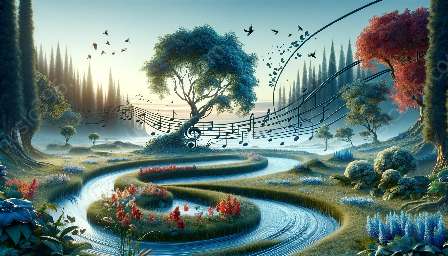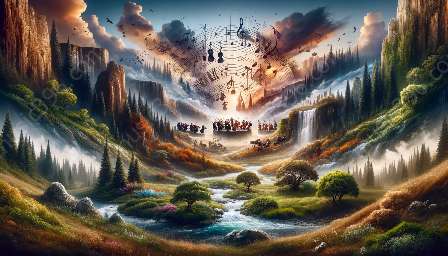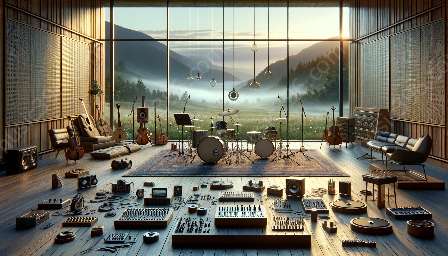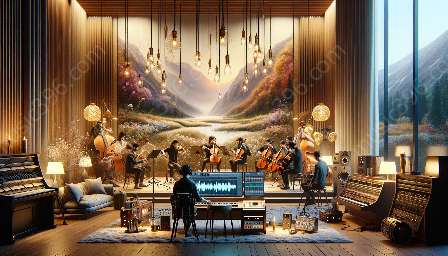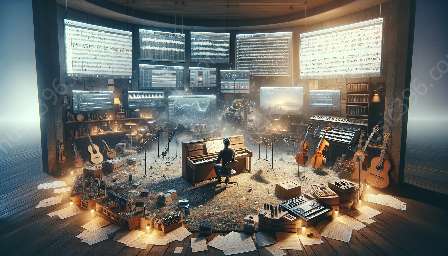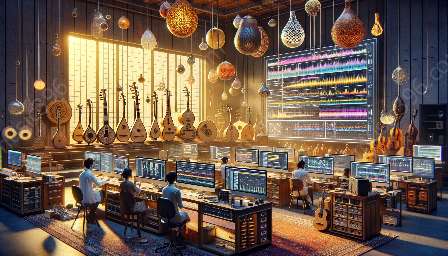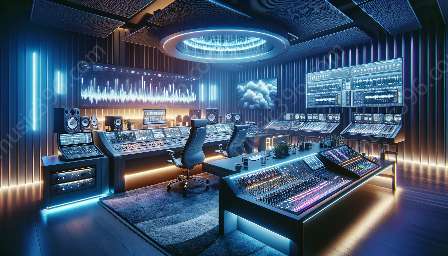Scoring for film and television plays a critical role in enhancing the visual content by creating an emotional connection with the audience. While both mediums share similarities in terms of musical elements and techniques, there are key differences that set them apart. Understanding these differences can provide valuable insights into the unique requirements of composing music for film and television.
Scoring for Film
Emotional Arc: Film scores often emphasize the emotional arc of the story, enhancing climactic moments, and capturing the overall essence of the narrative. Composers are tasked with creating music that complements specific scenes and evokes powerful emotions in the audience.
Orchestration and Budget: Film scores typically involve larger budgets and resources, allowing composers to work with full orchestras or specialized ensembles to achieve a grand and cinematic sound. This often leads to more elaborate and complex musical arrangements.
Unique Themes and Leitmotifs: Many film scores are associated with unique themes and leitmotifs that represent characters, objects, or recurring ideas within the storyline. These motifs are carefully woven into the fabric of the score, adding depth and symbolism to the music.
Scoring Process: The scoring process for films often starts at a later stage, with the composer having a clearer understanding of the visual content. This allows for a more integrated approach to composing, as the music can be tailored to fit the visual elements seamlessly.
Scoring for Television
Narrative Continuity: Television scores aim to maintain narrative continuity across multiple episodes or seasons. Composers need to create music that can adapt to various storylines and character developments while maintaining a cohesive sonic identity for the series.
Production Constraints: Television scores are often created under tighter production schedules and limited budgets compared to film. This can influence the choice of instrumentation and the overall scale of the music, leading to more practical and efficient composition approaches.
Recurring Themes and Variations: Given the episodic nature of television series, composers frequently develop recurring themes and variations to represent characters or story arcs. These musical motifs evolve over time, reflecting the changing dynamics of the narrative.
Scoring Process: The scoring process for television may start earlier in the production cycle, requiring composers to craft a flexible musical framework that can adapt to the evolving needs of the series. This often involves working closely with show creators and producers to align the music with the evolving visual content.
Comparative Analysis
When analyzing film and television scores, it becomes apparent that both mediums share common musical elements such as melody, harmony, rhythm, and instrumentation. However, the contextual differences shape how these elements are utilized and integrated into the storytelling process.
Emotional Impact: Film scores often have a more immediate and concentrated emotional impact due to the focused nature of a single storyline. Television scores, on the other hand, aim to sustain emotional engagement over extended periods, requiring a balance between familiarity and evolution in the musical themes.
Flexibility and Adaptability: Television scores demand a higher degree of flexibility and adaptability, as they need to complement diverse narratives and character arcs that unfold over multiple episodes. This flexibility leads to a more modular approach to composition, allowing for seamless integration of new musical material as the series progresses.
Collaborative Process: Both film and television scoring involve collaboration with directors, showrunners, and producers. However, the nature of this collaboration can differ, as film composers may have more autonomy in shaping the musical vision, while television composers work within a more iterative and collaborative framework to meet the evolving requirements of the series.
Conclusion
Understanding the key differences between scoring for film and television provides valuable insights for composers, music analysts, and enthusiasts alike. While both mediums share the fundamental goal of enhancing visual storytelling through music, their unique contexts and requirements shape the compositional approaches, production processes, and overall impact of the scores. By delving into these differences, we can gain a deeper appreciation for the artistry and craftsmanship behind film and television music.







